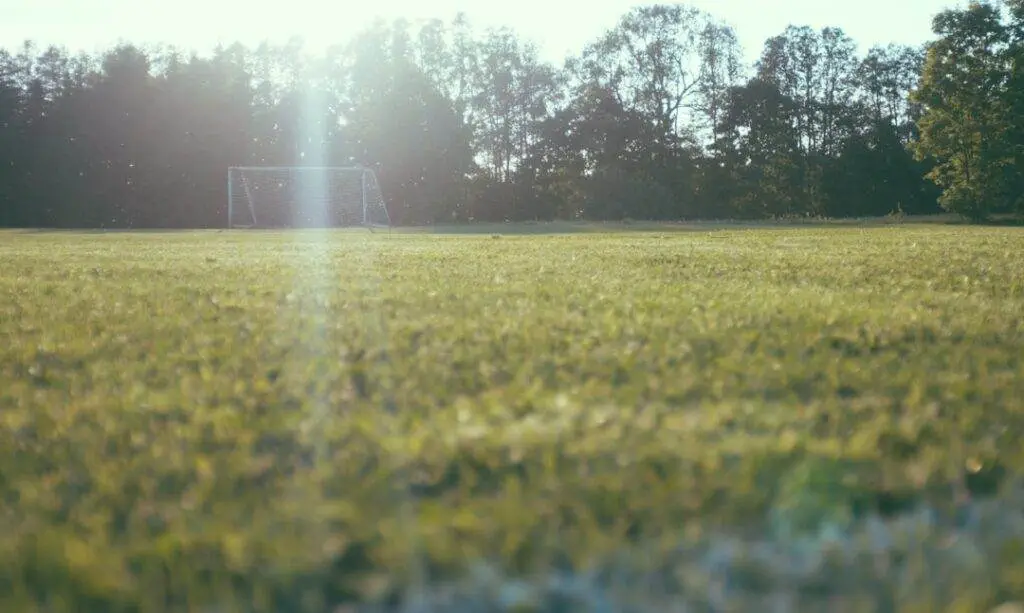The World Cup final is the pinnacle of international football, where the best teams worldwide compete for the ultimate prize. It is a tournament that captivates the attention of millions of fans worldwide and has a rich history of producing memorable moments and iconic matches. The 2022 World Cup final saw Argentina and France face a highly anticipated clash.
Argentina, led by their talismanic captain Lionel Messi, had been in scintillating form throughout the tournament. They had showcased their attacking prowess and ability to score goals at will. On the other hand, France, the reigning World Cup champions, boasted a star-studded lineup with players like Kylian Mbappe and Antoine Griezmann leading the attack.
The starting lineups and formations of both teams
Argentina lined up in a 4-3-3 formation, with Messi leading the attack alongside Sergio Aguero and Paulo Dybala. They had a trio of Leandro Paredes, Giovani Lo Celso, and Rodrigo De Paul in midfield. At the back, Nicolas Tagliafico, Nicolas Otamendi, Cristian Romero, and Gonzalo Montiel formed a solid defensive line in front of goalkeeper Emiliano Martinez.
France, on the other hand, opted for a 4-2-3-1 formation. Mbappe was deployed as the lone striker, with Griezmann playing behind him as the attacking midfielder. N’Golo Kante and Paul Pogba formed a formidable midfield partnership, providing both defensive cover and creativity. The defense consisted of Benjamin Pavard, Raphael Varane, Presnel Kimpembe, and Lucas Hernandez, with Hugo Lloris in goal.
Argentina’s attacking strategy and tactics
Argentina’s attacking strategy revolved around getting the ball to Messi as often as possible and allowing him to dictate the game’s tempo. They looked to exploit the spaces left by France’s full-backs and create scoring opportunities through quick passing and intricate movement. Messi’s ability to dribble past multiple defenders and create chances for his teammates was a key aspect of Argentina’s attacking approach.
In terms of tactics, Argentina focused on maintaining possession and building attacks patiently from the back. They looked to overload the midfield and create numerical superiority in key pitch areas. The wide players, Aguero and Dybala, provided width and stretched the opposition’s defense, creating space for Messi to operate in central areas. The full-backs also pushed forward to provide additional attacking options.
France’s defensive approach and counter-attacking style
France adopted a defensive approach to absorb pressure and hit Argentina on the counter-attack. They defended deep and compact, denying Argentina space in dangerous areas. Kante and Pogba played a crucial role in breaking up opposition attacks and initiating quick counter-attacks with their ability to win back possession and distribute the ball effectively.
France’s counter-attacking style was based on their pace and ability to transition quickly from defense to attack. Mbappe’s blistering speed was a constant threat on the break as he looked to exploit any spaces left by Argentina’s high defensive line. Griezmann’s intelligent movement and link-up play allowed him to create scoring opportunities for himself and his teammates.
The impact of key players on the game’s outcome
Both teams had key players who played a significant role in shaping the game’s outcome. Messi was instrumental in Argentina’s attacking play, constantly creating chances for himself and his teammates. His ability to unlock defenses with his vision and passing constantly threatened France.
On the other hand, Mbappe was France’s main attacking weapon. His pace and dribbling ability caused all sorts of problems for the Argentine defense. His movement and positioning allowed him to exploit the spaces left by Argentina’s high defensive line, leading to several scoring opportunities.
Analysis of the first half and its defining moments

The first half of the game was a tightly contested affair, with both teams creating chances but failing to find the back of the net. Argentina dominated possession and had more shots on goal, but France’s defense held firm. The defining moment of the first half came in the 35th minute when Messi unleashed a powerful shot from outside the box, only to be denied by an acrobatic save from Lloris.
Tactical adjustments made by both teams during the break
During halftime, both teams made tactical adjustments to try and gain an advantage in the second half. Argentina introduced Angel Di Maria in place of Aguero to add creativity and directness to their attack. On the other hand, France brought on Olivier Giroud to provide a physical presence up front and hold up play.
The second half’s critical moments and game-changing decisions
The second half saw a more open and end-to-end game, with both teams pushing for a breakthrough. Argentina continued to dominate possession and create chances, but France’s defense remained resolute. The game-changing moment came in the 65th minute when Mbappe latched onto a through ball and slotted it past Martinez to give France the lead.
The role of the referee in the game’s outcome
The referee played a crucial role in the outcome of the game, making several key decisions that significantly impacted both teams. One controversial decision came in the 75th minute when Argentina was awarded a penalty after a VAR review for a handball in the box. Messi stepped up and converted the penalty to level the scores.
Lessons learned and implications for future matches
In conclusion, the World Cup final between Argentina and France was a closely contested match that showcased the talent and skill of both teams. Argentina’s attacking strategy and tactics were impressive but could not break down France’s resolute defense. France’s counter-attacking style proved effective, with Mbappe’s goal ultimately deciding the game’s outcome.
The game highlighted the importance of key players and their impact on the outcome of matches. Messi and Mbappe were the standout performers for their respective teams, showcasing their ability to influence games and create scoring opportunities. The referee’s decisions also significantly shaped the game’s outcome, with the penalty awarded to Argentina proving to be a crucial moment.
The lessons learned from this game will affect future matches and tournaments. Teams will need to find a balance between attacking prowess and defensive solidity, as well as adapt their tactics based on the strengths and weaknesses of their opponents. The World Cup final serves as a reminder that football is a game of fine margins, where small details and decisions can significantly impact the outcome.
If you’re looking for a comprehensive tactical analysis of the thrilling World Cup final between Argentina and France in 2022, look no further than this article on Kicka Football. This in-depth analysis dissects the strategies employed by both teams, highlighting key moments and tactical decisions that shaped the match’s outcome. From formations to player movements, this article provides a fascinating insight into the intricacies of high-stakes football. Don’t miss out on this must-read analysis by visiting Kicka Football.






